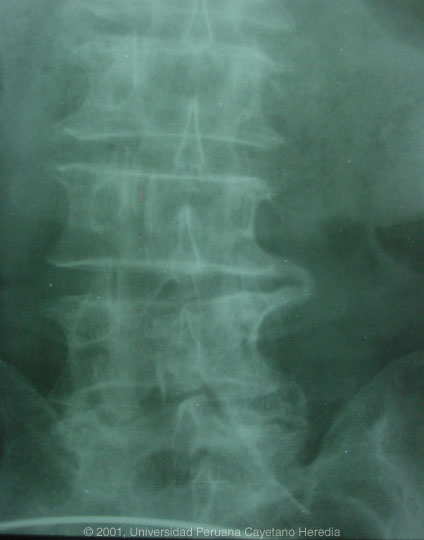2001 Case #2 |
 |
|
2001 Case #2
|
 |
|
| Diagnosis: |
| Discussion: The major differential given the fever, night sweats, and these abnormal spine films includes Brucella, TB, and malignancy. Several features of the spine films make the lesions seen diagnostic of brucellar disease: 1) lumbar location; 2) pathognomonic bridging osteophytes between adjacent vertebrae (seen here at 2 levels) simultaneous with the presence of both osteoblastic lesions and loss of bony mass in the same vertebrae; 3) loss of disk space; 4) loss of definition of bone at top of the affected vertebrae.
This patient had a On further questioning the patient relates that his son works in the Central market in Lima and frequently brings home unpasteurized goat cheese. This is a frequent scenario in Peru and most countries at highest risk of brucellosis with the predominant agent being
|
